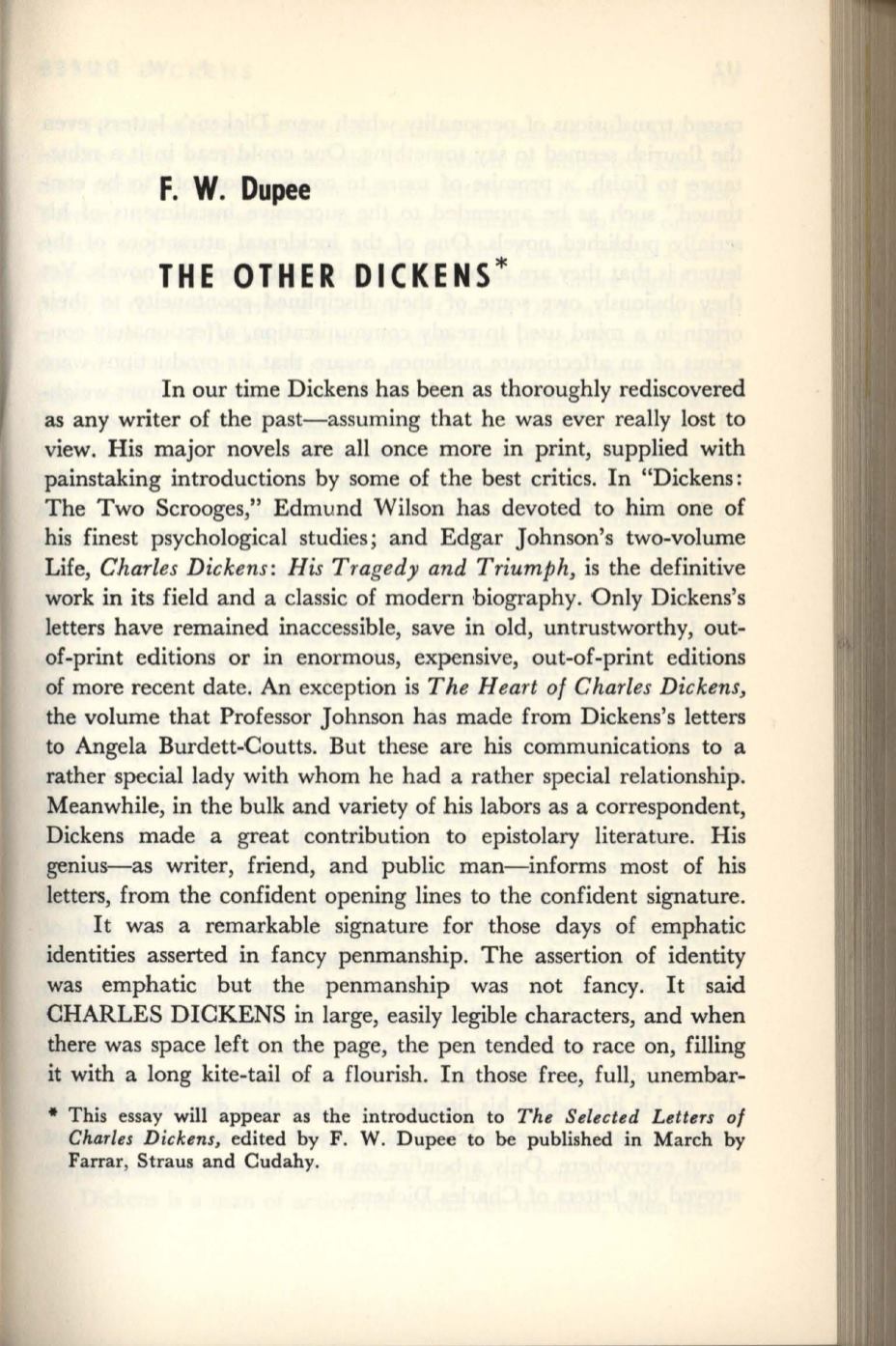
F. W. Dupee
THE OTHER DICKENS*
In our time Dickens has been as thoroughly rediscovered
as any writer of the past-assuming that he was ever really lost to
view. His major novels are all once more in print, supplied with
painstaking introductions by some of the best critics. In "Dickens:
The Two Scrooges," Edmund Wilson has devoted to him one of
his finest psychological studies; and Edgar Johnson's two-volume
Life,
Charles Dickens: His Tragedy and Triumph,
is the definitive
work in its field and a classic of modern biography. Only Dickens's
letters have remained inaccessible, save in old, untrustworthy, out–
of-print editions or in enormous, expensive, out-of-print editions
of more recent date. An exception is
The Heart of Charles Dickens,
the volume that Professor Johnson has made from Dickens's letters
to Angela Burdett-Coutts. But these are his communications to a
rather special lady with whom he had a rather special relationship.
Meanwhile, in the bulk and variety of his labors as a correspondent,
Dickens made a great contribution to epistolary literature. His
genius-as writer, friend, and public man-informs most of his
letters, from the confident opening lines to the confident signature.
It
was a remarkable signature for those days of emphatic
identities asserted
in
fancy penmanship. The assertion of identity
was emphatic but the penmanship was not fancy. It said
CHARLES DICKENS in large, easily legible characters, and when
there was space left on the page, the pen tended to race on, filling
it with a long kite-tail of a flourish. In those free, full, unembar-
• This essay
will
appear as the introduction to
The Selected Letters of
Charles Dickens,
edited by F. W. Dupee to
be
published in March by
Farrar, Straus and Cudahy.


